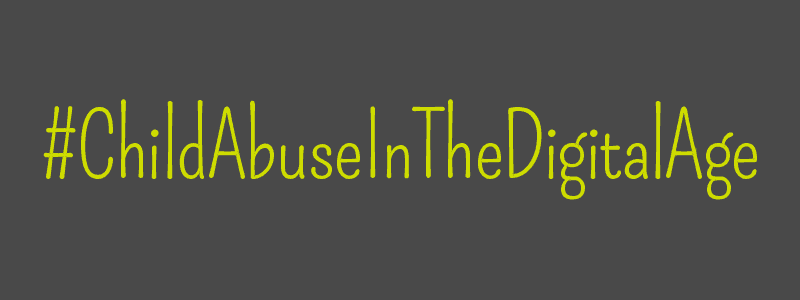Sexting is often wrongly dismissed as a harmless trend and many teenagers view it as a normal part of modern flirting.


Following Bolt Burdon Kemp’s ground breaking 2015 sexting case, ABC v West Heath 2000 (1) Whillock (2), where we secured £25,000 damages for a victim of sexting – we resolved to do more to shed light on the issue.
Bolt Burdon Kemp partner and specialist in the child abuse team David McClenaghan says:
“Sexting is becoming worryingly normalised among teens as more and more succumb to the dangerous trend.
“What might seem like teenagers harmlessly exploring their friendships with these pictures could be very dangerous. If these explicit or nude pictures are shared, they could fall into the hands of child abusers.
“We know that paedophiles are using modern technology as a means of accessing images of children. Children can be deceived into sharing images with adults posing as their peers.
“When sexting occurs between a child and an adult, it should rightly be seen as child abuse in the digital age.
“It can be the precursor to more serious physical abuse, but we shouldn’t forget that sexting between an child and an adult is child abuse in itself.
“Victims have every right to claim compensation for it”
We have created the following poster and checklist to raise awareness of the dangers of sexting:
- The poster is for use in schools, youth centres or at home and it gives teachers, activity leaders and parents key facts on the scale of the problem
- The checklist is designed to help parents address the topic of sexting with their children and give practical advice about what to do to safeguard children
You can download these both of these resources as part of our Sexting Safeguarding Toolkit to the right or at the bottom of the page. Our toolkit is for use in schools, youth centres or at home.

Now that you are aware of the prevalence of sexting, read our checklist for practical advice on how to protect children from the harm it can cause.
This is designed for parents, but teachers, activity leaders and social workers will also find it a useful resource to help them reinforce the message to the parents of the children they work with.
Sexting Safeguarding Checklist: How to Protect Children from Child Abuse
How to talk to your child about sexting

Sexting is a serious issue that can cause a child harm, just like bullying. It can be a difficult subject to approach but it’s important that you speak about it openly with your children. Here are some statements that might help you get the conversation going:
- “Sexting isn’t harmless fun.” Just because everyone else is doing it, that doesn’t make it right
- “Your body belongs to you and to nobody else.” Explain to your child that once that picture is sent, they lose all control of it and therefore who sees their body. Whoever receives the message could easily send it on to others, including adults
- “Naked images taken now might impact your future.” Tell them about the consequences of sexting. If the image or video is posted online, it might even make its way on to many different websites, including porn sites
- “Strangers online aren’t always who they say they are.” Explain the dangers of messaging strangers online. The teenager they think they’re speaking to might actually be an adult
- “Learn from their mistakes.” Show your child stories in the news about cases of children sexting to strengthen the advice and guidance you are giving. You might even want to use this as a way to introduce the conversation in the first place
- “If they really value and respect you, why would they want you to send pictures of your body?” Discuss why someone might want a nude picture of them and what messages are appropriate. Explain that even if it is being sent to a friend or as part of a relationship, it still isn’t safe. These pictures can be used to blackmail or bully you into sending more, or if you fall out, the pictures may be used in an act of revenge
Signs your child is sexting

- Your child is very secretive with their phone or when they are online
- They are spending more time on the internet
- They switch screens when you’re near them while they’re on the computer
- Your child has an older boyfriend or girlfriend
- Your child is being bullied
- They show signs of worry or anxiety
- Other parents at school have found nude images of their child
What to do if your child has been sexting

If you have discovered that your child has been sending naked pictures to someone, it is crucial that you stay calm so they feel able to open up to you. There may be a number of reasons why they’ve sent a naked picture, so it’s key that you listen to and support them.
- Reassure your child that you will do what you can to help and that they are not alone
- Find out who they sent the image to and whether it has been shared. Ask the person who it was sent to to delete it
- Keep a record of the mobile or online conversations as these may be needed as evidence in future
- If the image was shared online, you may be able to get it taken down by contacting the website. Or you can contact ChildLine who can work with the Internet Watch Foundation to have the image or video removed
- If the image or video was shared with an adult, you must immediately report it to the Child Exploitation and Online Protection Centre (CEOP) – the national policing lead for online sexual exploitation
- Inform the child’s school of the incident so that they can offer support and advice to you and your child

Top tips to monitor child safety online:
- Monitor what your child has access to by adding parental controls to their phone, computer, tablet and games console, so only you can authorise the apps they can download and websites they can view
- Make it clear to your child that you will be checking their online history regularly
- Make a habit of checking what is being said on social networks about your child
- Consider using an anti-sexting app, such as Selfie Cop or Zipit, to help your child to stop and think before they share photos
Getting legal help
Under current sexting law, it is illegal for a child to make and distribute naked images of themselves. If they are requested to do this by an adult, this is child abuse.
It is also child abuse for an adult to encourage a child to participate in any sexualised messaging, even if nude images are not involved.
If you are a victim of this, you are able to make a claim for compensation against the adult involved. In addition, if the abuse took place while at school, at a youth club or anywhere else where adults are expected to be responsible for the care of that child, you could make a claim for compensation against that institution.
Sexting Safeguarding Toolkit
We equip you with all the information you need to know about the growing popularity of teens sending explicit pictures to one another. If the exchange is between an adult and a child, it’s serious – it’s child abuse in the digital age.
Our toolkit is a downloadable version of the resources on this page for use in schools, youth centres or at home:
- The sexting safeguarding checklist for you to print and keep
- A #ChildAbuseInTheDigitalAge poster with facts and figures on sexting for you to stick up around school, within youth centres or anywhere else children and their guardians are likely to see it
Help safeguard your child from the dangers of sexting and download the toolkit today:






